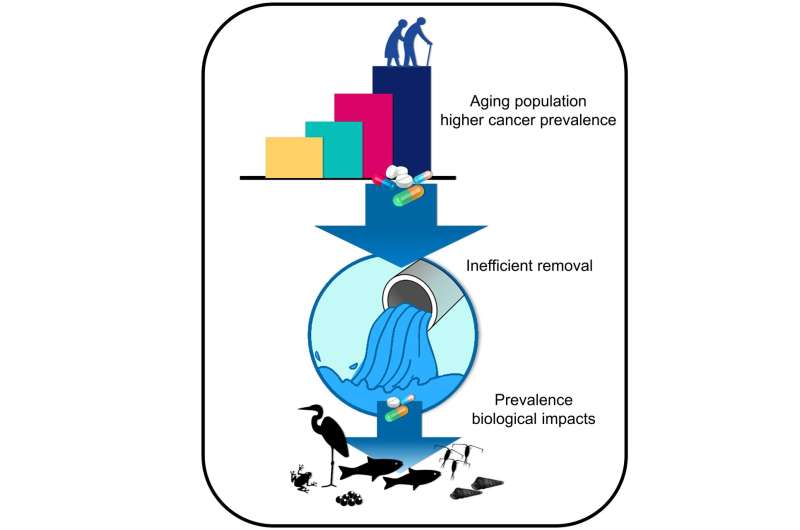What are the environmental impacts of cancer drugs?

Chemotherapeutic drugs, also known as antineoplastic agents, that are prescribed to treat a range of cancer types, enter the aquatic environment via human excretion and wastewater treatment facilities. A review published in Environmental Toxicology and Chemistry indicates that very few studies have characterized the effects of antineoplastic agents that are released into aquatic environments.
The authors noted that with hundreds of antineoplastic agents in late-stage clinical development, it is essential to understand the toxicity of these compounds in aquatic environments in order to inform future regulations.
"The global population is aging, and cancer-fighting pharmaceuticals are being detected in water systems. We need to be proactive as a scientific community and identify potential gaps in our knowledge regarding the consequences of anti-neoplastic exposure in aquatic organisms," said corresponding author Christopher J. Martyniuk, of the University of Florida at the College of Veterinary Medicine.
More information: Alexis M. Wormington et al, Antineoplastic Agents: Environmental Prevalence and Adverse Outcomes in Aquatic Organisms, Environmental Toxicology and Chemistry (2020). DOI: 10.1002/etc.4687
Journal information: Environmental Toxicology and Chemistry
Provided by Wiley




















